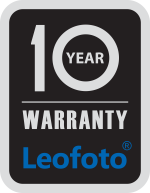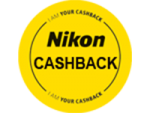|
PHOTOCHEM Lead Nitrate per 100gm (05965-0100)
Lead nitrate is a white crystalline solid. The material is soluble in water. It is noncombustible but it will accelerate the burning of combustible materials. If large quantities of the material are involved in the fire an explosion may result. Prolonged exposure of the material to fire or heat may result in an explosion. Toxic oxides of nitrogen are produced in fires involving this material. Reactivity Alerts
Air & Water Reactions
Water soluble.
Fire Hazard
Special Hazards of Combustion Products: Toxic oxides of nitrogen may form in fire.
Behavior in Fire: Increases the intensity of a fire when in contact with burning material. Use plenty of water to cool containers or spilled material. (USCG, 1999) Health Hazard
Early symptoms of lead intoxicatin via inhalation or ingestion are most commonly gastrointestinal disorders, colic, constipation, etc.; weakness, which may go on to paralysis, chiefly of the extensor muscles of the wrists and less often the ankles, is noticeable in the most serious cases. Ingestion of a large amount causes local irritation of the alimentary tract; pain, leg cramps, muscle weakness, paresthesias, depression, coma, and death may follow in 1 or 2 days. Contact with eyes causes irritation. (USCG, 1999)
Reactivity Profile
Mixtures of metal/nonmetal nitrates with alkyl esters may explode because of the formation of alkyl nitrates; mixtures of nitrate with phosphorus, tin (II) chloride or other reducing agents may react explosively [Bretherick 1979. p. 108-109]. An explosion of guanidine nitrate demolished an autoclave built to withstand 50 atmospheres, in which it was being made from ammonium thiocyanate and lead nitrate [C. Angew. Chem. 49:23. 1936].
Belongs to the Following Reactive Group(s)
Response RecommendationsFirefighting - Response recommendations if the chemical is on fire (or near a fire).
Non-Fire Response - Response recommendations if the chemical isn't on fire (or near a fire). Protective Clothing - Recommendations for protective gear and, in some cases, a table of breakthrough times for protective materials. First Aid - Recommended first aid treatment for people exposed to the chemical. List of data sources. Firefighting
Flood with water. Cool all affected containers with flooding quantities of water. Apply water from as far a distance as possible. (AAR, 2003)
Non-Fire Response
Keep sparks, flames, and other sources of ignition away. Keep material out of water sources and sewers. Land spill: Dig a pit, pond, lagoon, holding area to contain liquid or solid material. Cover solids with a plastic sheet to prevent dissolving in rain or fire fighting water. Water spill: Neutralize with agricultural lime (CaO), crushed limestone (CaCO3), or sodium bicarbonate (NaHCO3). Remove trapped material with suction hoses. Use mechanical dredges or lifts to remove immobilized masses of pollutants and precipitates. (AAR, 2003)
Protective Clothing
Dust mask and protective gloves (USCG, 1999)
First Aid
Remove at once all cases of lead intoxication from further exposure until the blood level is reduced to a safe value; immediately place the individual under medical care.
INGESTION: give gastric lavage using 1% solution of sodium or magnesium sulfate; leave 15-30 gm magnesium sulfate in 6-8 oz. of water in the stomach as antidote and cathartic; egg white, milk, and tannin are useful demulcents; atropine sulfate and other antispasmodics may relieve abdominal pain, but morphine may be necessary. EYES or SKIN: flush with water. (USCG, 1999) Physical PropertiesThis section contains physical properties, flammability limits, and toxic thresholds for this chemical (see definitions of each property). More property data is available for common chemicals.
Guide to toxic levels of concern (AEGLs, ERPGs, TEELs, and IDLH). List of data sources.
Flash Point: data unavailable
Lower Explosive Limit: data unavailable
Upper Explosive Limit: data unavailable
Autoignition Temperature: data unavailable
Melting Point: data unavailable
Vapor Pressure: data unavailable
Vapor Density: data unavailable
Specific Gravity: 4.53 at 68.0 ° F(USCG, 1999)
Boiling Point: data unavailable
Molecular Weight: 331.2 (USCG, 1999)
Water Solubility: data unavailable
AEGL: data unavailable
ERPG: data unavailable
IDLH: data unavailable
Regulatory InformationRegulatory Names - Names under which this chemical is regulated under several U.S. federal laws: CAA (Clean Air Act of 1990), CERCLA (Comprehensive Environmental Response, Compensation, and Liability Act of 1980, also known as Superfund), EPCRA (Emergency Planning and Community Right-to-Know Act, also known as SARA Title III), and RCRA (Resource Conservation and Recovery Act of 1976).
CAA RMP - Indicates whether this chemical is regulated under Section 112(r) of the Clean Air Act, which lists about 100 toxic, flammable, or explosive hazardous substances. (Section 112(r) mandates the Risk Management Plan regulations.) For listed chemicals, the Threshold Quantity (from 40 CFR 68) is also shown. Facilities that use more than the threshold quantity of a listed chemical in a process are subject to the CAA accidental release prevention provisions. CERCLA - Indicates whether this chemical is listed as a hazardous substance under CERCLA. For listed chemicals, the Reportable Quantity (from 40 CFR 302) is also shown. Facilities that spill more than the reportable quantity of a listed chemical must report it to federal, state, and local governments. EHS (EPCRA 302) - Indicates whether this chemical is listed as an Extremely Hazardous Substance under Section 302 of EPCRA. For listed chemicals, the Threshold Planning Quantity (from 40 CFR 355) is also shown. Facilities that store more than the threshold quantity of an EHS chemical must meet the reporting, community right-to-know, and emergency planning requirements of EPCRA. TRI (EPCRA 313) - Indicates whether this chemical is listed as a toxic chemical under Section 313 (Toxics Release Inventory) of EPCRA. Facilities that manufacture, store, or use significant amounts of Section 313 chemicals may be required to submit annual reports about any releases into the environment (see 40 CFR 372). RCRA Chemical Code - 4-character identification code assigned to this substance under RCRA.
CAA RMP: Not a regulated chemical.
CERCLA: Regulated chemical with a Reportable Quantity of 10 pounds.
EHS (EPCRA 302): Not a regulated chemical.
TRI (EPCRA 313): Not a regulated chemical.
RCRA Chemical Code: none No accessories for this product. |
  |
|||||||||||||||||||
Employment |
About Us |
Location |
Trading-Terms |
Contact Details |
Links |
Forward Order |
Mailing list
© 1982 - 2024 Vanbar Pty Ltd. All Rights Reserved
ECommerce Integration by Yart
FREE FREIGHT or POSTAGE
(Packing, handeling and shipping charges have been incorporated in the cost of these goods)
Today we are offering free freight in Australia on this product.Small items will ship via Australia post. All other products will ship via road freight or local couriers.This is a limited offer and subject to change at any time.
For Lab service products the return post or freight has been incorporated in the price and for Drop box only services there is NO freight applicable.
Close
(Packing, handeling and shipping charges have been incorporated in the cost of these goods)
Today we are offering free freight in Australia on this product.Small items will ship via Australia post. All other products will ship via road freight or local couriers.This is a limited offer and subject to change at any time.
For Lab service products the return post or freight has been incorporated in the price and for Drop box only services there is NO freight applicable.
Close




















